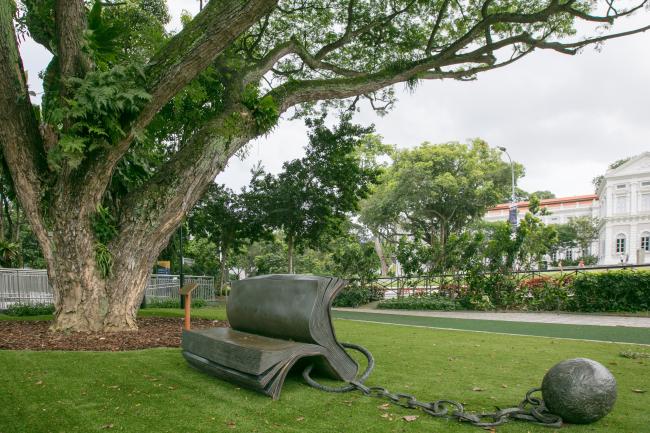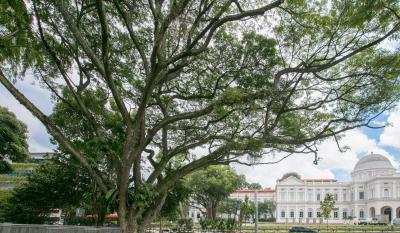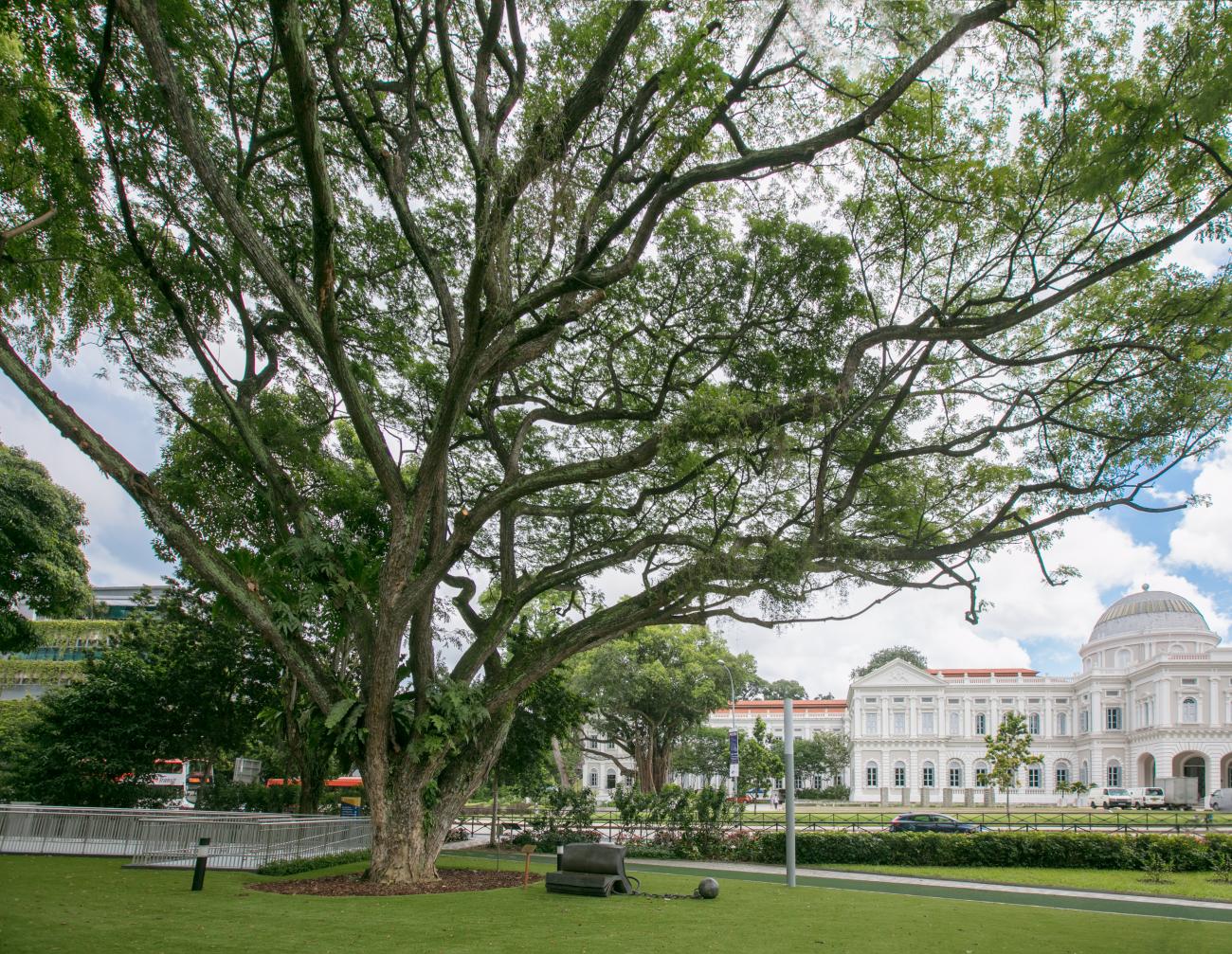Artwork Details
Sitting on History I
Credit: Gift of Dato' Kho Hui Meng 2013, Collection of SMU
This artwork is part of 25x25 Campus Art Tour.
Listen to the audio description of the artwork here.
Transcript:
The sculpture takes the form of a half-opened larger-than-life book cast in bronze. The book opens such that half of it becomes the seat, and the other half the backrest of a bench. Titled Sitting on History I, this sculpture was conceived by eminent British sculptor Bill Woodrow in 1996 for an exhibition of bronze works at the Tate Gallery in London. As the title suggests, Woodrow's sculpture deliberately entices passers-by to rest on it, as he designed his work to be conceptually complete only when a person sits on the pages of the book.
Weighing over 400 kg and tethered by a ball and chain, the sculpture embodies the enduring power of books, containing myriad knowledge, information and histories within its pages, and to which we as readers are a captive audience.
The actual book that the sculpture was modelled after came from a box of discarded books given to the artist by a London bookseller. To his amusement, Woodrow found three volumes on the history of the British Labour Party, the first political party in Britain to stand for workers' rights and social welfare. The artist then chose to base his sculpture off them to celebrate the power of books as a democratic tool and powerful form of communication.
--
Bill Woodrow (b. 1948, United Kingdom) emerged as a pivotal figure in a new generation of British sculptors in the early 1980s, who centred on the use of found objects and/or simple manufacturing procedures. Often using discarded or waste objects and ephemera, such as old washing machines, car parts, cutlery, and scrap metal, Woodrow then cut apart and reassembled these into inventive sculptures with often elusive meanings, placing the onus of interpretation on the viewer.
In the late 1980s, Woodrow began to transition from the direct manipulation of found objects to casting works in bronze. An exceptional example of his works in bronze was the monumental sculpture 'Regardless of History' made for the fourth plinth in Trafalgar Square, London in 2000. He has received several honorary distinctions during his career including; in the early 1980s representing Britain at Biennales in Sydney (1982), Paris (1982, 1985), and Sâo Paulo (1983); in 1986 he was a finalist in the Turner Prize at the Tate Gallery, London; in 1988 he won the Anne Gerber Award at the Seattle Museum of Art; he was a trustee of the Tate Galleries 1996-2001; in 2002 he was elected to the Royal Academy of Arts.
'Sitting on History' was proposed in response to a commission first discussed in 1990 and to Woodrow's Tate Gallery exhibition in 1996, which was an opportunity to realise a sculpture that could function as a seat.
'Sitting on History' is an edition of 10, and one of the editions is at the British Library, London.



